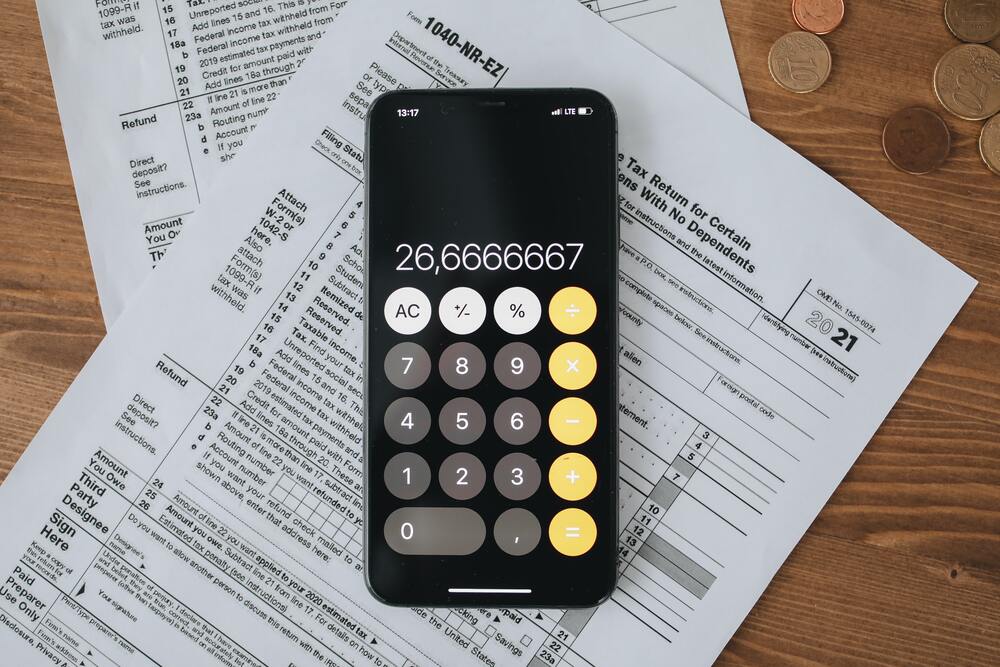Accounts Receivables is one of the words we commonly hear in economic terms. Unfortunately, many people misinterpret the meaning of the word accounts receivables and assume that receivables and payables are the same.
Then, what exactly is a receivable and how do you differentiate between account receivables and payables? On this occasion, the BFI Finance Team will discuss receivables. Check out the full explanation below.
Definition of Accounts Receivable
In general, receivables are bills that must be paid by the buyer. In other words, the claim is a right that can be claimed by individuals, companies, and organizations from transactions on credit.
Existing bills can then be repaid by making payments in the form of money, goods, or services in accordance with the applicable agreement. For the applicable period or known as the maturity period, receivables generally range from 30 days to 60 days.
Definition of Receivables in the World of Accounting
In the world of accounting, what is meant by accounts receivable or trade (account receivables) are current assets in a company due to sales transactions in the form of goods or services to a party In existing transactions, payments are made on credit or have not been paid off (accounts receivable).
The payment process for accounts receivable must be clear. Therefore, a maturity period is applied. If a company is prevented from claiming its receivables outside the agreed time, then the receivables are entered into a separate journal, namely the bad debts journal.
Definition of Receivables According to Experts
Several experts have defined the meaning of receivables. Are as follows.
Rusdi Akbar
Rusdi Akbar (2004: 199) defines receivables as the company's rights or claims to receive cash, goods, or services in the future as a result of past agreements.
M. Munandar
M. Munandar (2006: 77) explains that what is meant by receivables is the form of claims that are requested from other parties when the maturity period arrives.
Rudianto
Receivables according to Rudianto (2009: 224) are the company's rights to money, goods, or services from transactions that occurred in the past.
Martono dan Harjito
According to Martono and Harjito (2007: 95) receivables are invoices to customers or buyers for the company's product purchase transactions.
Warren Reeve Dan Fess
Understanding receivables according to Warren Reeve and Fess (2005: 404) is a claim in the form of money against other parties such as individuals, companies, organizations, and others.
Wibowo Dan Abu Bakar Arif
Wibowo and Abu Bakar Arif (2005: 151), receivables are claims for an amount of money that is expected to be obtained in the future.
Soemarso
According to Soemarso (2004: 338), what is meant by receivables is a form of concession payment provided by the company during the product sales process. This allowance is in the form of payment terms that must be repaid at a later date.
Enny Pudjiastuti
Meanwhile, according to Enny Pudjiastuti (2004: 117), receivables are the result of selling goods produced on credit.
Characteristics of Receivables
To make it easier for you to understand receivables, the following characteristics can be used as a reference.
There is a Due Date
Receivables are the rights of companies or individuals to a sum of money from sales transactions. In obtaining their rights, the company or individual as a creditor (the debtor) provides a due date to the debtor (the debtor) to be able to pay off the debt. The applicable repayment date is adjusted to the agreement between the two parties.
In addition, the maturity date also serves to maintain the stability of the company's cash flow. Without a clear determination of maturity, the company's accountants will find it difficult to prepare periodic financial journals.
Generally, There Is Interest
The second characteristic is the interest that is applied. Generally, companies apply interest as a consequence of delays in payment times. The interest given is very varied, depending on the creditor's policy.
On the other hand, interest is also applied so that the company or seller can benefit from the time of credit repayment.
There are Late Payment Consequences
The last characteristic of receivables is the imposition of consequences in the event of a default in the agreed maturity period. The consequences can be in the form of a blacklist or a total ban on crediting goods and services. In addition to the blacklist, the company can also report debtors to the authorities.
Types of Receivables
After we know that receivables are the right to claim money from sales transactions and their characteristics, then we will discuss the types of receivables.
Account Receivable
Accounts receivable or trade receivables are receivables that occur due to delays in payments by consumers after goods or services are received.
Although many receivables occur because of purchases on credit, in trade or trade receivables it is not uncommon for existing receivables to occur because of the sales system. For example, pre-orders, installments using third parties, distribution of retail stock, and others.
For the maturity period, this type of receivable generally lasts between 30 - 60 days and often does not apply interest.
Notes Receivable
Receivables of this type are receivables that occur because the debtor promises payment at a certain time through the attached formal letter. This existing agreement is subsequently approved by two parties, the creditor and the debtor. In this type of receivables, the maturity period lasts quite a long time. Takes between 60-90 days and interest is applied.
Other Receivable
Other receivables or often referred to as non-trade receivables are types of receivables that are not included in accounts receivable or notes receivable.
The types of other receivables are as follows.
-
Current Accounts
That is receivables that are paid according to the date they are collected. For example, payroll receivables, tax refunds, and employee advances.
-
Non-Current Receivables
Receivables paid to exceed the date of collection so that it can cause losses to the first party, namely the merchant.
-
Write-off Receivables
Receivables that have been forfeited or can no longer be billed because the buyer or consumer has suffered a loss.
-
Receivables Reserved
Namely, receivables that have been set aside from the start to avoid uncollectible amounts.
Example of Statement of Accounts Receivable
A statement of receivables is a list containing the obligations of the debtor (the debtor). It contains the due date and is complete with a description of the receivables and details.
Statements of receivables are divided into 4 types. Among others:
1. Month-End Balance Statement
The statement of the end-of-the-month balance is a statement of receivables in the form of remaining payments that need to be repaid by the debtor in the next period. The function of this statement is as proof of payment as well as a reminder of the remaining debt that needs to be repaid.
2. Unpaid Invoice Statement
Unpaid invoice statements are invoices given by the company to distributors or consumers when the transaction has taken place. It contains the purchase amount, the amount that needs to be paid, as well as the repayment time or due date.
3. Current Balance Statement
A statement of the current balance is a statement of receivables issued by an accountant for internal companies. With the current balance, the company's stakeholders can monitor the outstanding receivables and the estimated repayment time.
4. Unit Statement
The unit statement is a statement of receivables that contains the debtor's obligations at the beginning of the month, details of transactions for a month (credit and debit), and displays the balance that must be paid by the debtor at the end of the month.
Difference between Accounts Receivable and Payable
After we know what receivables are, the next thing that is important for you to understand is the difference between receivables and payables. Because, even though these two things are different, many people out there misinterpret them and think they are the same.

Image Source: Pexels/Mikhail Nilov
Literally Has a Different Meaning
Debt is an obligation to pay for goods or services received, while the definition of receivables is the opposite.
Receivables are defined as our property rights that are with others. This right can be in the form of money, goods, or services. In this receivable, there is usually interest on the receivables charged to the debtor (the debtor).
Different Activities
The most basic difference between payables and receivables lies in their activities. On accounts receivable, we provide loans. As for debt, a person or company obtains a loan.
Different Name
The party who has the debt is called the debtor, while the party who gives the loan or receivable is called the creditor.
Applicable Policies
As with debt, receivables have policies that apply. The policy is in the form of conditions that must be taken by prospective debtors (individuals or companies) if they want to make loans (credit).
Property Rights
Receivables are your property rights that are in other people, while debts are other people's obligations to give your rights.
Different Kinds of Interest
Receivables and debts both bear interest. The difference is that the interest contained in the receivables becomes the full rights of the company or lender (the creditor). While in debt, the interest is an additional cost on the loan obtained.
Tips for Managing Receivables
Giving credit is very risky. This is because transactions that occur do not necessarily finish at the same time. Not to mention as we know not everyone can be honest and pay it off on time.
Therefore, we have written the following tips on purpose so that you can manage your receivables effectively.
1. Perform Receivable Control
Control of receivables can be done by setting rules. The rules that you can apply include:
- Criteria for Individuals or Companies that may be in debt
- Special Rules Regarding Book Rate Value, Maturity Period, Installment System
- Shorten Maturity Period To Avoid Default
- Rejection of Prospective Debtors with Bad History
2. Enacting the Receivable Agreement
To avoid bankruptcy or other bad possibilities, make sure there is black and white that contains regulations, sanctions, and all matters relating to the agreement between the two parties. Do not forget to also affix the stamp to it.
3. Doing Bookkeeping Routinely
By doing bookkeeping regularly you will be helped to see the progress of receivables turnover. Are there any late payments and so on? Surely you don't want to lose, right?
4. Create a Special Receivable List
The special list of accounts receivable or better known as the credit card is an accounting record given to each customer containing the mutation of accounts receivable. Make a credit card in as much detail as possible by including the name of the debtor, details of the goods or services purchased, the maturity period, and so on.
5. Diligently Analyzing Accounts Receivable Turnover
Analyzing your existing receivables turnover can help you to implement better policies. Because, if the existing gains tend to be long even beyond the stipulated time, then a new policy must be made immediately.
6. Collect Receivables Regularly and Effectively
Giving credit cards is not enough. It's a good idea to also routinely collect existing receivables on a regular basis. For example, billing via telephone, WhatsApp, via message at a certain time, especially when the due date is near.
How to Overcome Uncollectible Accounts
Not everyone is disciplined enough to pay off their obligations. You can apply the following methods when you experience bad debts.
1. Follow Up
Do follow-up regularly. You can call or go directly to the debtor and ask when exactly the debt can be paid off immediately.
2. Charge More Often or Aggressively
Some people are not able, to be honest, and keep their promises. If you get a debtor like this, collect as often as possible and issue a formal warning letter. You can also send a debt collector to handle this.
3. Apply late fines
Imposing interest on the debtor does not always make them disciplined in paying off existing debts. Therefore, imposing a late payment penalty can be a surefire solution. Prospective debtors will think twice if they intentionally delay.
4. Implementing a Credit Limit Policy
Previously we already know that the maturity period is at least 30 days. In order to avoid bad things and keep the company's cash flow safe, reducing the existing limit to 2 weeks can be an alternative that can be tried.
5. Implementing a Blacklist System
If all the steps above have been implemented but the debtor still does not want to pay his obligations, you should apply a blacklist system. This will prevent the debtor from repeating the same mistake as well as being a bluff for anyone with bad intentions.
How to Get Easy and Safe Loans
Need a fast and safe loan? BFI Finance is the solution! We can help with various needs such as business capital, education costs, lifestyle, and others. Fast and secure process!
More information can be accessed via the web page below:
Information on Application for BPKB Motor Guarantee Loans
Information on Application for Car BPKB Guarantee Loans
Information on Submitting a Home Certificate Guaranteed Loan
Get interesting information about finance, business, loans, and more at BFI Blog. See you again in our next article!






